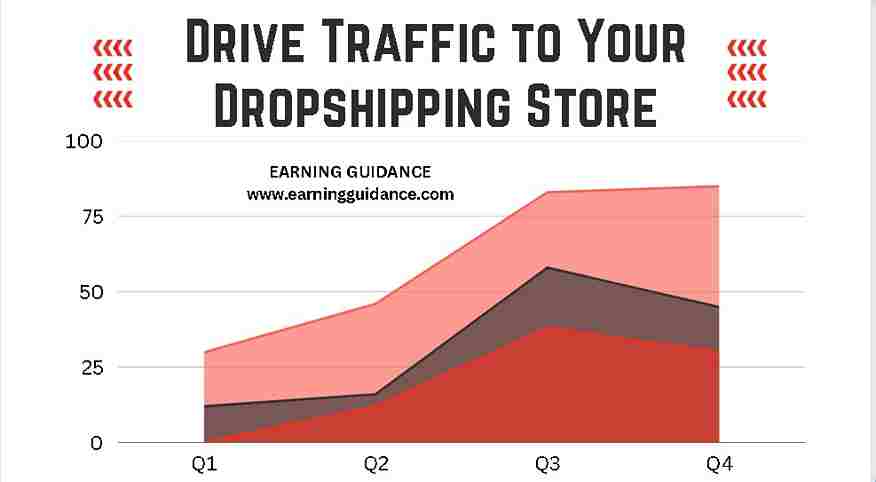Table Of Contents
- 1 Platforms and Tools for Successful Dropshipping
- 1.1 Introduction
- 1.2 Choosing the Right E-commerce Platform
- 1.3 Product Research and Sourcing Tools
- 1.4 Store Creation and Design Tools
- 1.5 Inventory and Order Management Tools
- 1.6 Marketing and Advertising Platforms
- 1.7 Analytics and Reporting Tools
- 1.8 Customer Support and Communication Tools
- 1.9 Security and Fraud Prevention Tools
- 1.10 FAQ
- 1.11 Conclusion
Platforms and Tools for Successful Dropshipping
Introduction
Dropshipping is a popular e-commerce business model that allows entrepreneurs to sell products without having to carry inventory or handle fulfillment. To succeed in dropshipping, it is crucial to utilize the right platforms and tools. This article will explore the various platforms and tools available to support dropshipping businesses and provide guidance on choosing the right ones.
Finding the Perfect Niche for Your Dropshipping Store
Choosing the Right E-commerce Platform
One of the critical decisions in setting up a successful dropshipping business is choosing the right e-commerce platform. The platform you select will serve as the foundation for your online store, managing various aspects such as product listings, order processing, payment gateways, and more. Here are some key factors to consider when choosing the right e-commerce platform for your dropshipping business:
- Features and Functionality: Look for an e-commerce platform that offers the necessary features and functionality to support your dropshipping operations. Consider the following:
- Easy product listing and inventory management
- Automated order processing and fulfillment
- Integration with popular payment gateways
- SEO-friendly features for better visibility in search engines
- Responsive and customizable website templates
- Scalability: As your dropshipping business grows, you’ll need an e-commerce platform that can accommodate increased traffic, product listings, and orders. Ensure that the platform you choose can scale with your business needs without compromising performance.
- Ease of Use: Consider your own technical expertise and comfort level with managing an e-commerce platform. Look for a platform that offers a user-friendly interface and intuitive tools, allowing you to easily manage your store without extensive technical knowledge.
- Integrations: Check if the platform integrates with third-party tools and services that are important for your dropshipping business. This may include payment gateways, marketing tools, analytics platforms, and more. Integration capabilities can streamline your operations and enhance your overall business efficiency.
- Customer Support: Evaluate the level of customer support provided by the e-commerce platform. Timely and reliable support can be crucial, especially when you encounter technical issues or have questions regarding the platform’s functionalities.
- Cost: Consider the pricing structure of the e-commerce platform and how it aligns with your budget. Compare the features and value offered by different platforms to find one that provides a balance between affordability and functionality.
- Platform Reputation: Research the reputation and user reviews of the e-commerce platform. Look for platforms that have a positive track record and are trusted by other dropshippers. This can give you an indication of the platform’s reliability and overall user satisfaction.
Remember, different dropshippers have unique requirements, so it’s important to assess your specific needs and choose a platform that aligns with your business goals. To assist you further in understanding the available options, here are three external resources you can explore:
- Shopify – Shopify is a popular e-commerce platform known for its user-friendly interface and extensive features. It offers a wide range of themes and integrations, making it suitable for dropshipping businesses.
- WooCommerce – WooCommerce is a WordPress plugin that enables you to transform your WordPress website into an e-commerce store. It provides flexibility and customization options, along with a vast library of plugins.
- BigCommerce – BigCommerce is a robust e-commerce platform that caters to businesses of all sizes. It offers powerful features, scalability, and comprehensive support, making it suitable for growing dropshipping ventures.
By carefully considering these factors and exploring the recommended e-commerce platforms, you can make an informed decision and choose the right platform that sets the stage for your dropshipping success.
Dropshipping vs. Traditional Retail: Pros & Cons
Product Research and Sourcing Tools
Product research and sourcing are crucial aspects of running a successful dropshipping business. Finding the right products to sell and reliable suppliers to source them from can significantly impact your profitability and customer satisfaction. Fortunately, there are several tools available to simplify and streamline the product research and sourcing process. Here are some key tools you can leverage:
- Marketplaces and Search Engines:
- Amazon – As the largest online marketplace, Amazon can serve as a valuable resource for product research. Explore bestseller lists, customer reviews, and product categories to identify popular and in-demand items.
- eBay – eBay is another platform that provides insights into trending products and their pricing. Utilize the “Completed Listings” feature to determine the sell-through rate and average price of products.
- Keyword Research Tools:
- Google Keyword Planner – This free tool from Google helps you identify popular search terms related to your niche. It provides data on search volume, competition, and keyword ideas, allowing you to optimize your product listings and target relevant keywords.
- Ubersuggest – Ubersuggest is a comprehensive keyword research tool that provides insights into search volume, keyword difficulty, and related search terms. It can help you discover untapped niche opportunities and optimize your product listings.
- Trend Analysis Platforms:
- Google Trends – Google Trends enables you to explore the popularity of specific products or search terms over time. It provides insights into seasonal trends, geographic interest, and related topics, helping you identify products with long-term potential.
- TrendHunter – TrendHunter is a platform that showcases emerging trends across various industries. It can inspire you with innovative product ideas and help you stay ahead of the competition.
- Supplier Directories and Platforms:
- AliExpress – AliExpress is a popular platform for sourcing products from international suppliers. It offers a wide range of products at competitive prices, making it suitable for dropshipping businesses.
- SaleHoo – SaleHoo is a directory of verified suppliers and wholesalers. It provides access to a curated list of suppliers, along with tools for product research and market analysis.
- Worldwide Brands – Worldwide Brands is a comprehensive directory of certified wholesalers and dropshippers. It offers a large database of products and suppliers, along with educational resources to guide your sourcing process.
- Social Media and Influencer Platforms:
- Instagram – Instagram can be a valuable platform for product research, especially for visually-oriented niches. Explore popular hashtags, influencer accounts, and engage with your target audience to gather insights into trending products.
- Influence.co – Influence.co is a platform that connects influencers with businesses. It can help you identify relevant influencers in your niche and collaborate with them to promote your products.
By leveraging these product research and sourcing tools, you can identify profitable products, discover reliable suppliers, and make informed decisions to drive the success of your dropshipping business.
To further enhance your understanding of product research and sourcing, here are three external resources you can explore:
- Jungle Scout – Jungle Scout offers a suite of tools for product research on Amazon. It provides data on product rankings, sales estimates, and competition analysis to assist you in finding profitable products.
- Oberlo – Oberlo is a popular platform that integrates with Shopify and allows you to easily import products from suppliers. It offers a wide range of products, along with features for order fulfillment and inventory management.
- Spocket – Spocket is a dropshipping platform that connects you with suppliers from Europe and the United States. It focuses on high-quality products and fast shipping times, enabling you to provide an excellent customer experience.
Remember, conducting thorough product research and establishing reliable supplier relationships are vital for the long-term success of your dropshipping business.
How to Start a Profitable Dropshipping Business from Scratch
Store Creation and Design Tools
Creating an appealing and user-friendly online store is essential for attracting customers and maximizing conversions in your dropshipping business. Fortunately, there are various store creation and design tools available that can simplify the process and help you build a professional-looking online store. Here are some key tools to consider:
- Website Builders:
- Shopify – Shopify is one of the most popular e-commerce platforms that offers a user-friendly website builder. It provides a wide range of customizable templates and drag-and-drop functionality, making it easy to create a visually appealing store without coding knowledge.
- Wix – Wix is a versatile website builder that offers e-commerce functionality. It provides a variety of customizable templates and a user-friendly interface, allowing you to create a unique store design.
- E-commerce Themes and Templates:
- ThemeForest – ThemeForest is a marketplace that offers a wide selection of premium e-commerce themes for popular platforms like Shopify, WooCommerce, and Magento. It provides professionally designed templates that can be customized to suit your brand and store requirements.
- TemplateMonster – TemplateMonster is another platform that offers a vast collection of e-commerce templates. It provides templates for various platforms and industries, allowing you to find a design that aligns with your store’s niche.
- Visual Editing Tools:
- Elementor – Elementor is a powerful drag-and-drop page builder plugin for WordPress. It offers a range of design elements and pre-designed templates that can be customized with ease.
- Divi Builder – Divi Builder is a popular visual editor for WordPress that provides a seamless editing experience. It offers a vast library of design elements and templates to create stunning store layouts.
- Logo and Graphic Design Tools:
- Canva – Canva is a versatile graphic design tool that allows you to create professional logos, banners, and other visual assets for your store. It provides a user-friendly interface and a wide selection of templates, fonts, and images.
- Adobe Photoshop – Adobe Photoshop is a powerful software for graphic design and image editing. It offers advanced editing features and allows for more customization options when creating store graphics.
- User Experience (UX) Tools:
- Hotjar – Hotjar is a UX analytics and feedback tool that provides insights into user behavior on your store. It offers heatmaps, visitor recordings, and feedback polls to help you optimize the user experience.
- Optimizely – Optimizely is an experimentation platform that allows you to test and optimize different elements of your store, such as layouts, colors, and calls-to-action, to improve conversions.
Remember to focus on creating a visually appealing store design, ensuring intuitive navigation, and optimizing the overall user experience. These store creation and design tools can assist you in building a professional online store that captures the attention of your target audience.
To further enhance your store creation and design knowledge, here are three external resources you can explore:
- Ecommerce Platforms: Store Builders Comparison – This resource provides a comprehensive comparison of various e-commerce store builders, their features, and pricing plans.
- Canva Design School – Canva Design School offers a wide range of tutorials and resources to improve your graphic design skills and create visually appealing store assets.
- Shopify Theme Store – The Shopify Theme Store provides a vast collection of professionally designed e-commerce themes. You can explore different themes and see demos to find a design that suits your store’s aesthetic and functionality needs.
By utilizing these store creation and design tools, you can establish a visually captivating and user-friendly online store that resonates with your target audience and boosts your dropshipping business’s success.
10 Essential Dropshipping Tips for Beginners
Inventory and Order Management Tools
Efficient inventory and order management are crucial aspects of running a successful dropshipping business. With the right tools, you can streamline your operations, keep track of inventory levels, and ensure smooth order fulfillment. Here are some essential inventory and order management tools to consider:
- Inventory Management Systems:
- TradeGecko – TradeGecko is a comprehensive inventory management system that integrates with popular e-commerce platforms. It offers features such as real-time inventory tracking, automated stock reordering, and centralized order management.
- Zoho Inventory – Zoho Inventory is a cloud-based inventory management software that allows you to manage stock levels, track orders, and streamline your dropshipping operations. It integrates with various e-commerce platforms and provides reporting and analytics capabilities.
- Order Management Platforms:
- ShipStation – ShipStation is a leading order management platform that simplifies shipping and fulfillment. It integrates with multiple carriers and offers features like order tracking, label printing, and automated shipping notifications.
- Orderhive – Orderhive is a centralized order management software that helps streamline order processing, inventory synchronization, and shipping management. It integrates with various marketplaces, shopping carts, and shipping carriers.
- Dropshipping Automation Tools:
- Oberlo – Oberlo is a popular dropshipping automation tool that integrates with Shopify. It allows you to easily import products from suppliers, automate order fulfillment, and track inventory levels.
- Doba – Doba is a dropshipping platform that connects you with suppliers and automates order processing. It provides a wide range of products to choose from and offers inventory syncing and order tracking features.
- Barcode Scanning and Labeling Tools:
- Scandit – Scandit is a barcode scanning software development kit (SDK) that enables fast and accurate scanning using mobile devices. It helps streamline inventory management and order processing by automating barcode scanning.
- Avery Design & Print – Avery Design & Print is a tool for creating customized labels, stickers, and tags for your products. It offers templates and design features to create professional-looking labels for efficient order management.
- Analytics and Reporting Tools:
- Stitch Labs – Stitch Labs is an inventory management and analytics platform that provides real-time insights into your inventory, sales, and profitability. It offers reporting and forecasting features to help you make informed business decisions.
- QuickBooks Commerce – QuickBooks Commerce (formerly known as TradeGecko) is an inventory and order management solution that provides comprehensive reporting and analytics capabilities. It helps you gain insights into sales trends, inventory performance, and customer behavior.
To further enhance your knowledge of inventory and order management tools, here are three external resources you can explore:
- TradeGecko Blog – The TradeGecko blog offers informative articles and guides on inventory management, order fulfillment, and best practices for running a successful dropshipping business.
- ShipStation Resource Center – ShipStation’s resource center provides valuable insights and tips on shipping and order management. It covers topics such as fulfillment strategies, shipping carrier comparisons, and order processing automation.
- Oberlo Blog – The Oberlo blog offers a wealth of information on dropshipping, including articles on inventory management, order fulfillment, and tips for finding reliable suppliers.
By utilizing these inventory and order management tools, you can streamline your operations, ensure efficient order fulfillment, and provide a positive customer experience, ultimately contributing to the success of your dropshipping business.
The Ultimate Guide to Dropshipping: Everything You Need to Know
Marketing and Advertising Platforms
Marketing and advertising play a crucial role in driving traffic to your dropshipping store and generating sales. With the right platforms and tools, you can effectively reach your target audience and promote your products. Here are some essential marketing and advertising platforms to consider:
- Social Media Marketing Platforms:
- Facebook Ads – Facebook Ads allows you to create targeted ad campaigns and reach a wide audience based on demographics, interests, and behaviors. It provides robust audience targeting options and offers various ad formats to showcase your products.
- Instagram Ads – Instagram Ads enables you to promote your products through engaging visual content. As a popular platform for product discovery, Instagram offers targeting options to reach users based on their interests and demographics.
- Pinterest Ads – Pinterest Ads allows you to showcase your products through visually appealing pins. With its focus on discovery and inspiration, Pinterest can be an effective platform for driving traffic and sales.
- Email Marketing Platforms:
- Mailchimp – Mailchimp is a popular email marketing platform that enables you to create and send personalized email campaigns. It offers automation features, segmentation options, and detailed analytics to track the performance of your email marketing efforts.
- Klaviyo – Klaviyo is an email marketing platform designed specifically for e-commerce businesses. It offers advanced segmentation, automated flows, and integrations with popular e-commerce platforms to help you drive conversions and build customer loyalty.
- Influencer Marketing Platforms:
- Influence.co – Influence.co is a platform that connects businesses with influencers in various niches. It provides tools for discovering influencers, managing collaborations, and tracking campaign performance.
- Upfluence – Upfluence is an influencer marketing platform that allows you to find influencers, manage campaigns, and measure the impact of influencer collaborations. It provides advanced search filters and analytics to help you identify the right influencers for your niche.
- Pay-Per-Click (PPC) Advertising Platforms:
- Google Ads – Google Ads is a powerful advertising platform that allows you to display ads on the Google search engine and its advertising network. It offers keyword targeting, ad bidding, and detailed analytics to help you reach potential customers and drive relevant traffic to your store.
- Bing Ads – Bing Ads is Microsoft’s advertising platform that enables you to display ads on the Bing search engine and its partner networks. It provides similar targeting options as Google Ads and can be an effective way to reach a different audience.
- Content Marketing Platforms:
- WordPress – WordPress is a popular content management system (CMS) that allows you to create a blog or content-rich website to promote your dropshipping business. It offers various plugins and themes to enhance your site’s functionality and design.
- Medium – Medium is a platform for publishing and sharing articles. By creating valuable and engaging content related to your niche, you can attract and engage your target audience.
To further enhance your knowledge of marketing and advertising platforms, here are three external resources you can explore:
- Facebook Business – Facebook Business provides comprehensive resources and guides on advertising and marketing on the Facebook platform. It offers tutorials, case studies, and best practices to help you maximize the effectiveness of your Facebook ad campaigns.
- Google Ads Help – The Google Ads Help center provides extensive documentation and resources on using Google Ads. It covers topics such as campaign setup, keyword targeting, ad optimization, and performance tracking.
- Influencer Marketing Hub – Influencer Marketing Hub is a valuable resource for learning about influencer marketing strategies and platforms. It offers guides, industry insights, and tools to help you navigate the world of influencer marketing effectively.
By utilizing these marketing and advertising platforms, you can effectively promote your dropshipping business, reach your target audience, and drive conversions. Remember to monitor and analyze the performance of your campaigns to make data-driven decisions and optimize your marketing efforts.
Analytics and Reporting Tools
Analyzing data and tracking key metrics is essential for understanding the performance of your dropshipping business and making informed decisions. By utilizing analytics and reporting tools, you can gain valuable insights into your website traffic, conversion rates, customer behavior, and overall business performance. Here are some important analytics and reporting tools to consider:
- Google Analytics: Google Analytics is a powerful and widely used web analytics tool. It provides detailed insights into your website’s performance, including traffic sources, user behavior, conversion rates, and more. Key features include:
- Traffic analysis: Track the number of visitors to your website, their demographics, and the channels through which they found your site.
- Goal tracking: Set up goals and track conversions to measure the effectiveness of your marketing campaigns and user engagement.
- E-commerce tracking: Monitor sales, revenue, and product performance to optimize your dropshipping business.
- Behavior analysis: Understand how users interact with your site, including page views, bounce rates, and session duration.
- Hotjar: Hotjar is a comprehensive analytics and feedback tool that provides insights into user behavior through heatmaps, session recordings, and surveys. Key features include:
- Heatmaps: Visualize where users click, scroll, and engage the most on your website to identify areas of interest and optimize your layout.
- Session recordings: Watch recordings of user sessions to understand their navigation patterns, interactions, and potential pain points.
- Surveys and feedback: Gather direct feedback from users through on-site surveys and polls to understand their needs and preferences.
- Kissmetrics: Kissmetrics is an advanced analytics platform that focuses on customer behavior and engagement. It helps you understand individual user journeys and provides insights into conversion optimization and customer retention. Key features include:
- Customer journey tracking: Track individual user behavior and engagement across multiple devices and touchpoints.
- Conversion funnels: Identify bottlenecks in your sales funnel and optimize the customer journey to increase conversions.
- Customer segmentation: Create customer segments based on specific criteria to personalize marketing campaigns and messaging.
To further enhance your knowledge of analytics and reporting tools, here are three external resources you can explore:
- Google Analytics Academy – Google Analytics Academy offers free online courses and resources to help you learn how to use Google Analytics effectively. You can explore different modules and topics to deepen your understanding of web analytics.
- Hotjar Blog – The Hotjar Blog provides articles, case studies, and best practices on using analytics and user feedback to improve your website’s performance. It covers topics such as conversion optimization, user experience, and data-driven decision-making.
- Kissmetrics Blog – The Kissmetrics Blog offers in-depth articles and resources on analytics, customer behavior, and marketing strategies. It provides insights and tips on how to leverage data to drive business growth and improve customer retention.
By utilizing these analytics and reporting tools, you can gain valuable insights into your dropshipping business, optimize your marketing efforts, and make data-driven decisions to drive success. Remember to regularly review and analyze the data to identify areas for improvement and seize opportunities for growth.
Customer Support and Communication Tools
Effective customer support and communication are crucial for building trust and maintaining strong relationships with your customers in the dropshipping business. Utilizing the right tools can help you provide prompt assistance, enhance communication, and deliver excellent customer service. Here are some customer support and communication tools to consider:
- LiveChat: LiveChat is a popular tool that enables real-time customer support through live chat. It allows you to engage with customers directly on your website, answer their questions, resolve issues, and provide personalized assistance. Key features include:
- Live chat support: Engage in real-time conversations with customers, offer immediate assistance, and resolve queries efficiently.
- Chatbots: Use AI-powered chatbots to provide automated responses and assist customers with frequently asked questions.
- Visitor monitoring: Track visitor behavior, gather customer information, and gain insights into customer preferences and pain points.
- Zendesk: Zendesk is a comprehensive customer support platform that offers various tools to streamline customer communication and support processes. Key features include:
- Ticketing system: Manage customer inquiries, issues, and requests through a centralized ticketing system, ensuring timely resolution.
- Knowledge base: Create a self-service knowledge base to provide customers with helpful articles, FAQs, and resources for quick reference.
- Multichannel support: Engage with customers across multiple channels, including email, chat, social media, and phone.
- Intercom: Intercom is a versatile customer messaging platform that allows you to communicate with customers through various channels and automate personalized interactions. Key features include:
- In-app messaging: Send targeted messages and announcements directly to customers within your website or mobile app.
- Automated campaigns: Set up automated email campaigns based on user behavior, such as abandoned carts or order updates.
- Customer segmentation: Segment your customer base based on specific criteria to deliver personalized messages and offers.
Additionally, for effective communication with suppliers and partners, consider using tools such as:
- Slack: Slack is a collaboration platform that enables real-time communication and file sharing among team members. It can be used to streamline communication with suppliers, discuss product updates, and address any concerns or inquiries.
- Trello: Trello is a project management tool that allows you to create boards, lists, and cards to organize and track tasks related to supplier communication, inventory management, and order fulfillment.
To further enhance your understanding of customer support and communication tools, here are three external resources you can explore:
- LiveChat Blog – The LiveChat Blog offers articles, tips, and best practices for providing excellent customer support through live chat. It covers topics such as customer service strategies, chat etiquette, and building customer relationships.
- Zendesk Support Center – Zendesk’s Support Center provides a comprehensive knowledge base with articles, guides, and resources on customer support best practices, ticket management, and optimizing customer interactions.
- Intercom Blog – The Intercom Blog features a wide range of articles on customer communication, user engagement, and customer support. It provides insights and tips on using messaging platforms effectively to drive customer satisfaction and retention.
By utilizing these customer support and communication tools, you can ensure prompt and efficient assistance to your customers, enhance communication with suppliers, and deliver a positive and seamless experience throughout the dropshipping process.
Security and Fraud Prevention Tools
Security and fraud prevention are paramount in the dropshipping business to protect your customers’ sensitive information, maintain trust, and safeguard your online store. Implementing the right security measures and utilizing fraud prevention tools can help you mitigate risks and ensure a secure environment. Here are some security and fraud prevention tools to consider:
- SSL Certificates: SSL (Secure Sockets Layer) certificates encrypt the communication between your website and customers’ browsers, ensuring secure data transmission. SSL certificates establish trust and protect sensitive information such as credit card details. You can obtain SSL certificates from trusted certificate authorities or through your hosting provider.
- Payment Gateways: Payment gateways provide secure payment processing, encrypting sensitive payment data during transactions. Popular payment gateways include PayPal, Stripe, and Authorize.Net. These gateways offer robust security features, fraud protection mechanisms, and compliance with industry standards.
- Fraud Detection Services: Implementing fraud detection services helps identify and prevent fraudulent activities, protecting your business and customers. These services use advanced algorithms and machine learning techniques to analyze transaction patterns and detect potential fraud. Some popular fraud detection tools include:
- FraudLabs Pro: FraudLabs Pro offers comprehensive fraud prevention solutions, including IP address geolocation, device fingerprinting, and transaction scoring. It helps identify suspicious activities and potential fraud attempts.
- Signifyd: Signifyd provides a fraud protection platform that utilizes machine learning and data analysis to detect and prevent fraud in real-time. It offers order guarantee and chargeback protection to safeguard your business.
- Kount: Kount is a leading fraud prevention platform that uses advanced AI and machine learning algorithms to analyze transaction data and identify fraudulent activities. It offers real-time fraud detection and prevention capabilities.
Additionally, implementing best practices for data security and fraud prevention is essential. Some key practices include:
- Regularly updating and patching your e-commerce platform and associated plugins or extensions to protect against vulnerabilities.
- Utilizing strong, unique passwords for all accounts and enabling two-factor authentication whenever possible.
- Monitoring your website for suspicious activities, such as unauthorized access attempts or unusual traffic patterns.
- Educating yourself and your team about common fraud techniques and staying up-to-date with the latest security practices.
To further enhance your knowledge of security and fraud prevention tools, here are three external resources you can explore:
- SSL.com – SSL.com’s blog provides articles and resources on SSL certificates, encryption, and website security. It covers topics such as certificate types, installation guides, and best practices for securing your website.
- PayPal Seller Protection – PayPal’s Seller Protection resource provides information on fraud prevention and seller protection measures offered by PayPal. It covers topics such as eligible transactions, dispute resolution, and tips to avoid fraud.
- Kount Blog – The Kount Blog features articles and insights on fraud prevention, cybersecurity, and data protection. It covers topics such as emerging fraud trends, risk management strategies, and industry regulations.
By implementing strong security measures, utilizing fraud prevention tools, and staying informed about the latest security practices, you can create a safe and trustworthy environment for your customers and protect your dropshipping business from fraudulent activities.
FAQ
- What are the essential platforms and tools for successful dropshipping?
- How do I choose the right e-commerce platform for my dropshipping business?
- What are some popular tools for product research and sourcing in dropshipping?
- How can I effectively market my dropshipping store using platforms and tools?
- What analytics and reporting tools can help me track the performance of my dropshipping business?
Conclusion
Utilizing the appropriate platforms and tools is essential for achieving dropshipping success. By selecting the right e-commerce platform, conducting thorough product research, utilizing effective marketing tools, and leveraging analytics, dropshipping entrepreneurs can enhance their business operations and maximize their potential for growth. It’s important to explore and leverage the suitable platforms and tools that align with the specific needs of your dropshipping business.













One thought on “The Best Platforms and Tools for Successful Dropshipping”